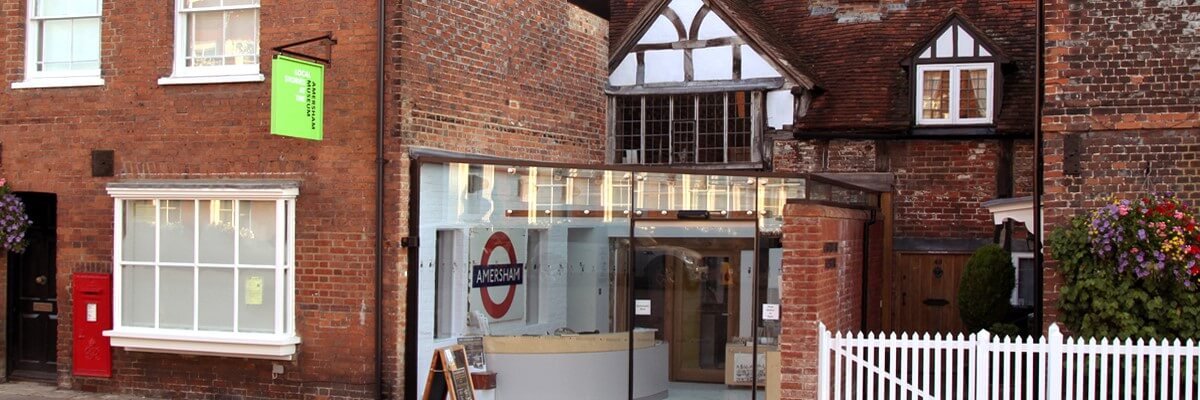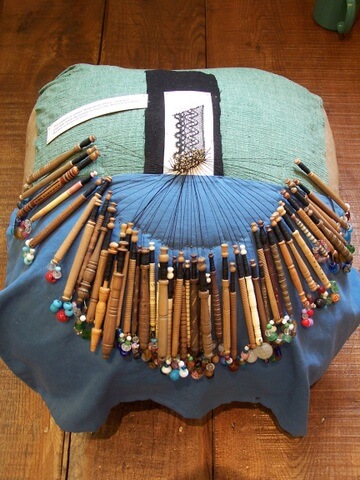This article was written by Jane Bowen for Amersham Museum
Lace makers used silk or cotton thread, a pattern pricked from a parchment template, brass pins and lots of skill and practice to make fine patterns that appear within a regular mesh known as the ground. Protestant refugees from Mechlin in Flanders and Lille in France between 1568 and 1572 are credited with bringing lace making to England and especially Buckinghamshire. ‘Bucks point’ lace incorporates Mechlin or Lille designs on a Lille ground. By 1791, the Universal British Directory recorded Amersham as the centre of black silk lace production. It specialised in fine silk veils and wide flounces of black lace that were used to decorate white dresses. Hand-made bobbin lace was eventually replaced by machine-made lace and now only a few enthusiasts can reproduce the original intricate patterns.
Lace making has changed from being a craft industry that supplemented the income of families of agricultural labourers and provided employment for workhouse inmates into a gentile pastime for ladies.
Traditionally, lace buyers organised the supply of materials, payment of the workers and sale of the goods. Lace schools were established to teach the complicated patterns to children. At first the children paid the teacher but when proficient, they were paid for the lace they produced. Lace makers have been affected by politics and industrial innovation. Charles I banned imported lace in 1635 giving a boost to home production, and smuggling from Flanders, but this was soon reversed when Cromwell’s puritans discouraged the wearing of lace. After the restoration of Charles II and throughout the 18th and 19th centuries, English lace was worn by everyone, including royalty and babies, to adorn their clothes, fans, shoes and even night caps.


